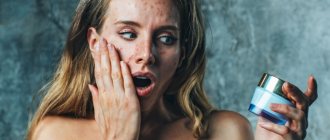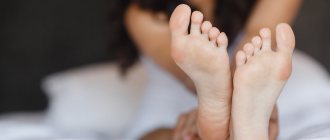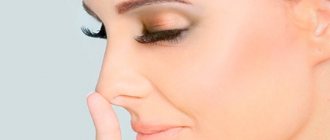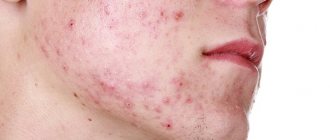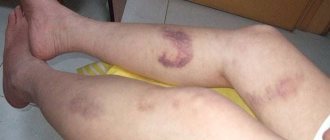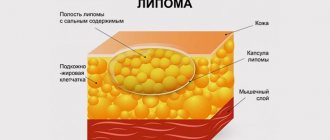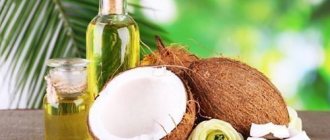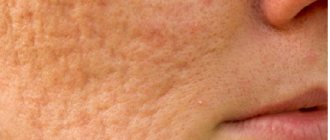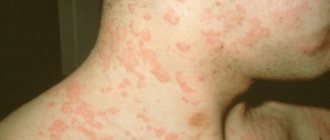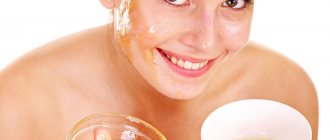Ointment for urticaria is prescribed to reduce itching, swelling, redness and irritation of the skin. Non-hormonal ones are used: Fenistil gel with a cooling effect, Zinc for weeping areas, Desitin and Bepanten to protect the skin and restore. For swelling, inflammation and severe redness, the doctor prescribes hormonal medications for 5-7 days: Advantan, Elokom. Apply Sinaflan and Hydrocortisone ointment with caution for urticaria on the face.
For allergic urticaria, the drugs Fenistil, Psilo-balm are used, and in the acute stage - hormonal. For the cold form, without an exacerbation, you need to use Panthenol and Bepanten, and for the heat form, the doctor prescribes prescriptions with belladonna extract. Ointments are usually combined with tablets: Claritin, Erius, Zodak.
What kind of ointment is there for urticaria?
Ointment for urticaria comes with hormones and non-hormonal composition. The advantages of the former are considered to be a rapid antipruritic, anti-edematous and anti-inflammatory effect. Disadvantages include addiction, dryness and thinning of the skin. Not all hormonal drugs can be used by children, pregnant and lactating women.
Non-hormonal external agents have a good ability to reduce itching and skin irritation, and their components do not harm patients. Negative properties are associated with a gradual effect; they help little in the acute stage. The most effective hormonal and non-hormonal ointments are listed in the table.
| Name | Active substance | Hormone content | Feature of the drug |
| Elokom | Mometasone | Eat | Well tolerated |
| Advantan | Methylprednisolone | Eat | Allowed from birth, safest |
| Beloderm | Betamethasone | Eat | Quickly relieves itching |
| Fenistil | Dimetinden | No | Suitable for all types of urticaria |
| Psilo-balm | Diphenhydramine | No | Effective immediately after application |
Hormonal
Hormonal ointments differ in their strength: for urticaria, the use of the strongest ones is not required (Dermovate), for an acute inflammatory reaction (swelling, blisters, redness, irritation) they start with weak ones (Hydrocortisone), and if ineffective, switch to drugs of medium strength (Prednisolone).
For severe urticaria, the following may be prescribed: Sinaflan, Elokom, Advantan, Beloderm. All drugs are used for a course of no more than 5-7 days. As soon as the severe symptoms subside, you need to cancel them, but it is better to do this gradually, reducing the amount and frequency of use.
Non-hormonal
Non-hormonal ointments contain antiallergic components (Fenistil, Psilo-balm). They are effective in the acute stage and when the condition of patients with chronic urticaria worsens. Preparations containing natural remedies (Gistan, Desitin) are best used in the stage of subsiding exacerbation.
Vitamin ointments are needed to restore the skin after a course of hormonal medications; they also help reduce the skin’s reaction to external irritants, that is, they are recommended for the prevention of rashes.
We recommend reading about what Bepanthen cream is used for. From the article you will learn about the properties of Bepanthen cream, indications for use, and features of use. And here is more information about who and when Advantan ointment is prescribed.
Hormonal drugs
Hormonal topical treatments for urticaria contain laboratory-made analogues of the hormones that are produced in our adrenal glands. These are the most powerful antiallergic and antipruritic drugs. Hormonal ointments are divided into 4 groups according to the strength of their anti-inflammatory effect:
- Weak action force. This is Hydrocortisone cream and ointment with hydrocortisone concentrations of 0.1%, 0.25%, 1%, 5%.
- Moderate strength. These are the ointments “Prednisolone”, “Emovate”, “Deperzolon”, “Ftorokort”, “Lorinden”, “Sinaflan”, “Flucinar”, “Ultralan”, “Dermatop”.
- Strong. These are “Celestoderm-B”, “Lokoid”, “Elocom”, “Advantan”.
- Very strong: Dermovate, Chalciderm.
The drugs for urticaria of the first two groups are still most similar in structure to natural adrenal hormones, and they have a weaker effect. The last 2 groups are modified hormones, which contain 1 or 2 halogen atoms (chlorine or fluorine). These atoms make the hormones stronger, but also provide more serious side effects: when applied to large surfaces of the body, skin atrophy, swelling, dilation of small subcutaneous vessels, increased blood pressure and blood glucose levels can develop.
The last two phenomena are associated with the absorption of hormones into the blood, which occurs especially quickly on the face, where the vessels are located especially close to the surface of the skin. Therefore, hormonal creams and ointments for urticaria of groups 3 and 4 are used mainly on the arms and torso. You can apply them to the face and especially the eyelids if absolutely necessary.
Drugs of groups 3 and 4 are ointments used for urticaria in adults, and in children over 6 years of age - in case of severe disease.
Any local hormonal remedy for urticaria is applied strictly according to the dose, which depends on the area being treated. The dosage is measured in the amount that fits on the tip of the index finger (this is called a fingertip unit - FTU):
- 2.5 EKP is applied to the face and neck;
- 7 units go to the chest or back;
- for one hand – about 3 units;
- one brush – 1 ECP;
- one leg – 6 units;
- one foot – 2 EKP.
Hormonal drugs
What and when to use ointment for urticaria on the skin of adults
The choice of ointment and cream for urticaria on the skin in adults depends on the form of the disease: allergic, cold, heat, cholinergic or papular. Fenistil gel and hormonal ointments are considered the most universal.
For allergic
For allergic urticaria, hormonal drugs will best help with severe exacerbation (Advantan, Elokom, Beloderm, Hydrocortisone, Sinaflan). For moderate redness and itching, use drugs with antiallergic components, but without hormones - Fenistil, Psilo-balm.
The use of external agents with a natural composition, as well as any new drug, should begin with a test for individual tolerance. To do this, it is recommended to apply the ointment to the elbow and after 15 minutes assess the condition of the skin - in case of redness and irritation, the drug is contraindicated.
From cold and heat
For cold urticaria, the greatest effectiveness was noted from the use of hormonal drugs - Elokom, Advantan, Sinaflan. Protective agents are also used to reduce reactions to irritants, for example, Bepanten and Panthenol ointments.
And with the second variant of temperature urticaria - thermal, they all help little, the doctor prescribes ointments with Atropine or belladonna extract to patients. They are not sold ready-made; they are prepared in a pharmacy according to an individual prescription. Some patients use a mixture of candles melted in a water bath with belladonna and Vaseline in equal parts. After cooling, apply this mixture to the skin 1-2 times a day.
Cold urticaria
From cholinergic
Cholinergic urticaria occurs when there are disorders of the immune system, when stress, taking a hot bath, or physical activity become a provoking factor for the rash. Since the disease occurs as an immediate allergic reaction, it makes sense to use only ointments that help against allergies - Fenistil, Psilo-balm and all hormonal ones in acute cases.
From papular
Papular urticaria occurs in response to insect bites; it is helped by drugs with a pronounced antipruritic effect - Psilo-balm, Gistan, Fenistil. If they are ineffective, hormones are added to them for 2-3 days. It is very important between exacerbations to use ointments that normalize the condition of the skin - Bepanten, Panthenol.
Watch this video about the causes and symptoms of urticaria:
What does angioedema look like?
Angioedema of the eyes Urticaria and angioedema have somewhat similar developmental symptoms.
Sometimes angioedema develops immediately after direct contact with an irritating substance, and sometimes this condition occurs a short time after the onset of urticaria symptoms. Let's look at the clinic and all the symptoms that may indicate the development of edema.
Angioedema with urticaria is a dangerous condition, often life-threatening for a patient of any age. It is accompanied by a sharp development of swelling of the skin in any one area or part of the body or even throughout the body. Gradually, the process begins to spread to the subcutaneous fat.
On palpation, the swelling of the tissues is dense and warm. Skin color usually does not change. Symptoms of itching are rarely present.
When urticaria and angioedema occur simultaneously, a red rash in the form of blisters appears on the patient’s skin. And in this case, there is both itching and burning.
Most often, this type of edema develops in the larynx and in this case requires immediate action to relieve this allergic reaction as soon as possible. The fact is that when the larynx area is damaged, suffocation often develops literally in a matter of minutes and the person can die.
With the development of edema in the eye area, vision is impaired, and with damage to the genitourinary organs, urination changes and becomes difficult.
The best ointments for urticaria in adults with itching and how to use them
For itchy skin in adults against the background of urticaria, ointments without hormones are prescribed: Fenistil, Psilo-balm, Zinc. For prevention and recovery, Bepanten and Panthenol are used. In case of exacerbation, Advantan, Elokom, Hydrocortisone, Sinaflan are used in a short course. After the acute process has subsided, the doctor may recommend Gistan and Desitin.
All medications are applied only to the area of the rash with a thin layer. During the acute stage, it is not recommended to rub in the ointment; it is carefully applied to the skin in a thin layer, since any mechanical irritation increases the itching and leads to the spread of rashes. After the exacerbation subsides, a light massage is allowed to speed up the absorption of the external remedy.
Fenistil
Fenistil contains dimethindene, which helps against all types of urticaria, as it has a fairly strong anti-allergic and antipruritic effect. Its properties:
- reduces the permeability of small vessels caused by allergies (anti-edematous effect);
- reduces itching and skin irritation;
- slows down the reaction to external stimuli (local anesthetic and cooling effect);
- relieves inflammation.
After application, the effect occurs immediately and lasts up to 4 hours. Penetrates well into the skin, and no more than 10% of the active substance passes into the blood. Used for application to the affected area in a thin layer without rubbing 2-4 times a day. May in rare cases cause burning and dryness. When using Fenistil, you should not sunbathe.
Recommended with caution during pregnancy and breastfeeding (do not apply to the skin near the nipples); contraindicated for glaucoma and prostate enlargement.
Zinc
It is advisable to use zinc ointment for urticaria only on wet areas, since its main effect is drying, astringent, and absorbent. In all other cases, it greatly dries out the skin. Apply a thin layer to the affected area 2-3 times a day.
Sinaflan
Sinaflan contains the hormone fluocinolone. It quickly reduces inflammation and swelling of the skin, redness, but the antipruritic effect is felt after 1-2 days of regular use. Prescribed for urticaria according to the rules:
- no more than 5 days;
- applied to the palm-sized surface of the skin;
- lubricate with a thin layer;
- apply 2-4 times a day.
With longer treatment, thinning of the skin, discoloration, and dilation of small blood vessels occur. When used on the face, Sinaflan provokes acne and hair growth. Contraindicated for infectious skin lesions, trophic ulcers, wounds, cancerous tumors, pregnancy, lactation.
Bepanten
Bepanten has a very weak antipruritic and anti-edematous effect; it helps more with the healing and restoration of the skin, so for urticaria it can be used after the acute inflammation has subsided. The drug is also recommended for restoring the skin of the face and hands after a course of hormonal ointments.
Approved for children from birth, nursing (applied to the mammary glands after feeding), and pregnant women. Apply 1-2 times a day with a light massage. There are no course duration restrictions required.
Beloderm
Beloderm contains betamethasone, it is considered the optimal treatment option for acute urticaria. This is explained by a fairly strong and rapid effect, which allows the drug to be used in a short course. Has a minimum of side effects. Properties of the ointment:
- relieves itching and redness;
- reduces inflammation and skin irritation;
- stops the progression of allergic reactions;
- constricts blood vessels.
Long-term use on the face, especially in the eye area, is not recommended. When applied in areas of skin folds (inguinal, axillary), a course of no more than 3 days is recommended. The ointment is contraindicated for skin infections, injuries, syphilis, and chickenpox. Apply a thin layer to the affected area 2 times a day. Analogues in composition: Celestoderm, Betamethasone, Akriderm.
Sulfuric ointment
Sulfur ointment is not indicated for urticaria; it is used for itchy skin caused by scabies (infestation with scabies mites). Doctors rarely prescribe this drug for microbial origin or bacterial complications of the disease. Rubbed into the skin once a day alone or in combination with Prednisolone. Often, when applying sulfur ointment, skin itching intensifies and chronic allergic dermatoses, including urticaria, worsen.
Advantan
Advantan ointment contains methylprednisolone, which is characterized by a rapid reduction in discomfort during urticaria. Relieves itching, burning, soreness, redness and swelling. It is important that among all hormonal drugs it is considered less dangerous, since it acts in the skin and is practically not absorbed into the blood. It extremely rarely causes adverse reactions.
Apply once a day; for urticaria, it can be used for up to 2 weeks. During the treatment period, you should be careful not to get the ointment into your eyes. The drug is contraindicated in infectious diseases; it is prescribed with caution to pregnant and lactating women (away from the mammary glands). Analogues in composition: Comfoderm, Comfoderm K.
Desitin
Desitin has a protective effect against urticaria, contains zinc oxide, vitamin E, and aloe juice. When applied, it forms a coating that reduces the effect of irritating factors. Can be used for a long time, applied in a thin layer 1-2 times a day on the face, hands, and exposed parts of the body.
Panthenol
Panthenol has a healing and restorative effect on the skin, cools slightly and relieves mild inflammation. It is used for urticaria only outside the acute stage of the disease, since the components of the drug can cause an increase in the allergic reaction. Helps with cold and aquagenic (from water) urticaria, as it covers the skin with a protective layer. Panthenol should not be applied to wet areas.
Hydrocortisone
Hydrocortisone ointment has pronounced anti-inflammatory and antipruritic effects, reduces redness and swelling in urticaria. If the drug has not been used before, then you need to carry out a test application on the skin fold, since the drug can provoke skin irritation with increased sensitivity.
Apply a thin layer of ointment to the affected area 2-3 times a day. Hydrocortisone ointment should not be used for more than 7 days. It is recommended with caution for urticaria on the face and décolleté, since even a short course can cause dilation of small capillaries, thinning, and dehydration.
Psilo-balm
Psilo-balm contains an antiallergic component – diphenhydramine. It quickly relieves skin itching, redness and swelling, cools and soothes irritated skin. Apply 3-4 times a day, a single dose is a column of cream about 4 cm, it is distributed over the surface of the skin equal to the size of the patient’s palm. You should not go out into the sun for 1-2 hours; alcohol is prohibited during the treatment period.
Elokom
Elokom contains mometasone, which acts quickly and strongly, but no more than 0.4% of the active substance penetrates into the bloodstream. The drug is well tolerated by most patients. For urticaria, it is prescribed for 3-7 days once a day.
After the acute inflammation subsides, it is better to gradually reduce the dosage; you can use the ointment every other day. Contraindicated for infections; not prescribed for urticaria in pregnant and lactating women. Analogs: Mometasone, Momat, Avekort.
Gistan
Gistan contains panthenol, extracts from string and birch buds, vitamin B6 and lavender oil. When applied:
- soothes sensitive skin;
- relieves redness and irritation, itching and soreness;
- helps recovery;
- eliminates dryness and flaking;
- has an antiallergic effect.
Apply a thin layer for chronic urticaria, apply with slight rubbing 2-4 times a day.
Why can swelling develop with urticaria?
What does angioedema look like?
The basis of any allergic reaction, including urticaria, is an immune response to the penetration of all kinds of irritating and foreign substances into the human body. At the very first contact with this factor, only increased susceptibility to it develops, that is, the body remembers, but practically does not react clinically at all. But in the case of all subsequent contacts, a response in the form of an allergy always develops. All symptoms that appear with urticaria occur under the influence of histamine, which is produced almost instantly after the penetration of the allergen.
As a result of the synthesis of histamine, the vascular permeability of the skin increases, which leads to the formation of redness and swelling.
Angioedema with urticaria occurs when the process spreads deep into the tissue, into the subcutaneous tissue, affecting the mucous membranes.
Urticaria and angioedema can occur not only in the face and larynx, which is most often diagnosed, but also in the lower leg, chest, internal organs, and genitals. But, nevertheless, angioedema with damage to the mucous membrane of the larynx is considered the most life-threatening.
Urticaria ointment for children
Urticaria ointment for children can only be used taking into account age restrictions and dosages (see table).
| Name | From what age | Single dose, column length | How many times to lubricate per day | Course of treatment, in days |
| Advantan | From 4 months | 0.5 cm | 1 | 3-5 |
| Fenistil | From 1 month | 1-2 cm | 2-4 | 3-10 |
| Bepanten | From birth | 1-3 cm | 1-2 | Long-term |
| Desitin | From birth | 1-3 cm | 1-2 | Long-term |
| Psilo-balm | From 2 years | 2-4 cm | 3-4 | Up to 7 days |
To relieve itching, small children are recommended to take baths with a decoction of string, chamomile, and sea salt. Newborns can use the drug Flotseta baby. It contains extracts of chamomile, witch hazel, and calendula. The gel has an anti-inflammatory effect, reduces redness and swelling of the skin. Apply 3 times a day in a thin layer, apply for a long time until a sustainable improvement in skin condition.
What tablets should be used to supplement the treatment of urticaria with ointment?
Even the strongest ointment only temporarily relieves the symptoms of urticaria, since the disease is of allergic origin, tablets are always prescribed at the same time:
- fexofenadine – Allegra, Telfast;
- loratadine – Clarisens, Claritin;
- sehifenadine – Histafen;
- cetirizine – Zodak, Cetrin;
- desloratadine – Erius, Blogir-3;
- calcium gluconate;
- enterosorbents and probiotics – Laktofiltrum, Enterosgel, Dufalak;
- calming – Novo-passit, Persen.
In severe cases, hormonal drugs for oral administration and cytostatics are added. The choice of medications is always made after the examination; the regimen for each patient is selected individually.
We recommend reading about how to choose an ointment for bruises. From the article you will learn why and how to use ointment for a bruise, recommendations for use, contraindications. And here is more information about the characteristics and features of the use of Troxevasin ointment.
Ointment for urticaria can be non-hormonal with antiallergic or herbal components that have antipruritic and decongestant effects. For acute inflammation, hormonal medications and tablets are indicated.
